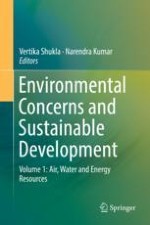
2020 | OriginalPaper | Buchkapitel
1. Contributions of Computer-Based Chemical Modeling Technologies on the Risk Assessment and the Environmental Fate Study of (Nano)pesticides
verfasst von : Juan José Villaverde, Beatriz Sevilla-Morán, Carmen López-Goti, José Luis Alonso-Prados, Pilar Sandín-España
Erschienen in: Environmental Concerns and Sustainable Development
Verlag: Springer Singapore
Aktivieren Sie unsere intelligente Suche, um passende Fachinhalte oder Patente zu finden.
Wählen Sie Textabschnitte aus um mit Künstlicher Intelligenz passenden Patente zu finden. powered by
Markieren Sie Textabschnitte, um KI-gestützt weitere passende Inhalte zu finden. powered by